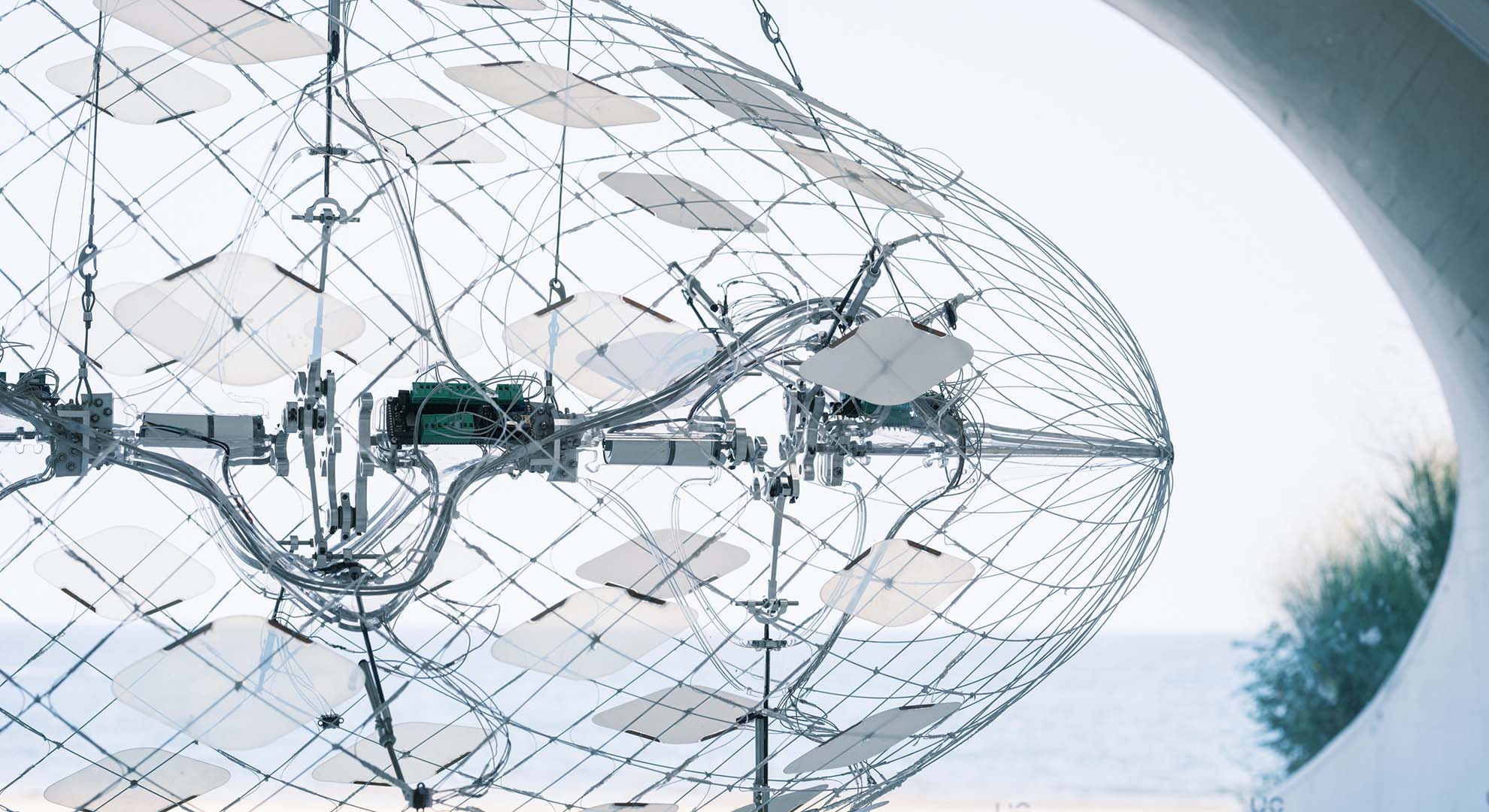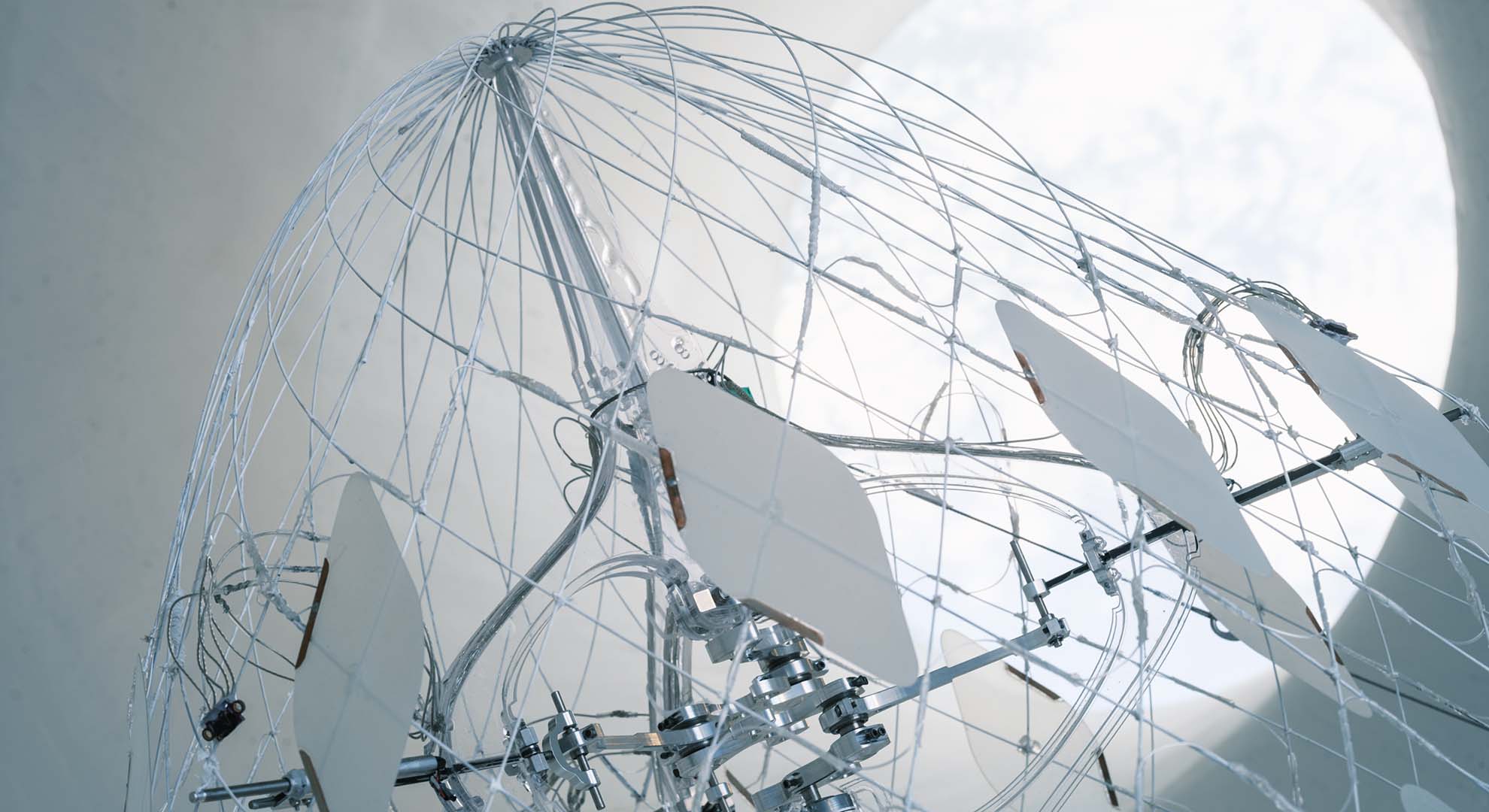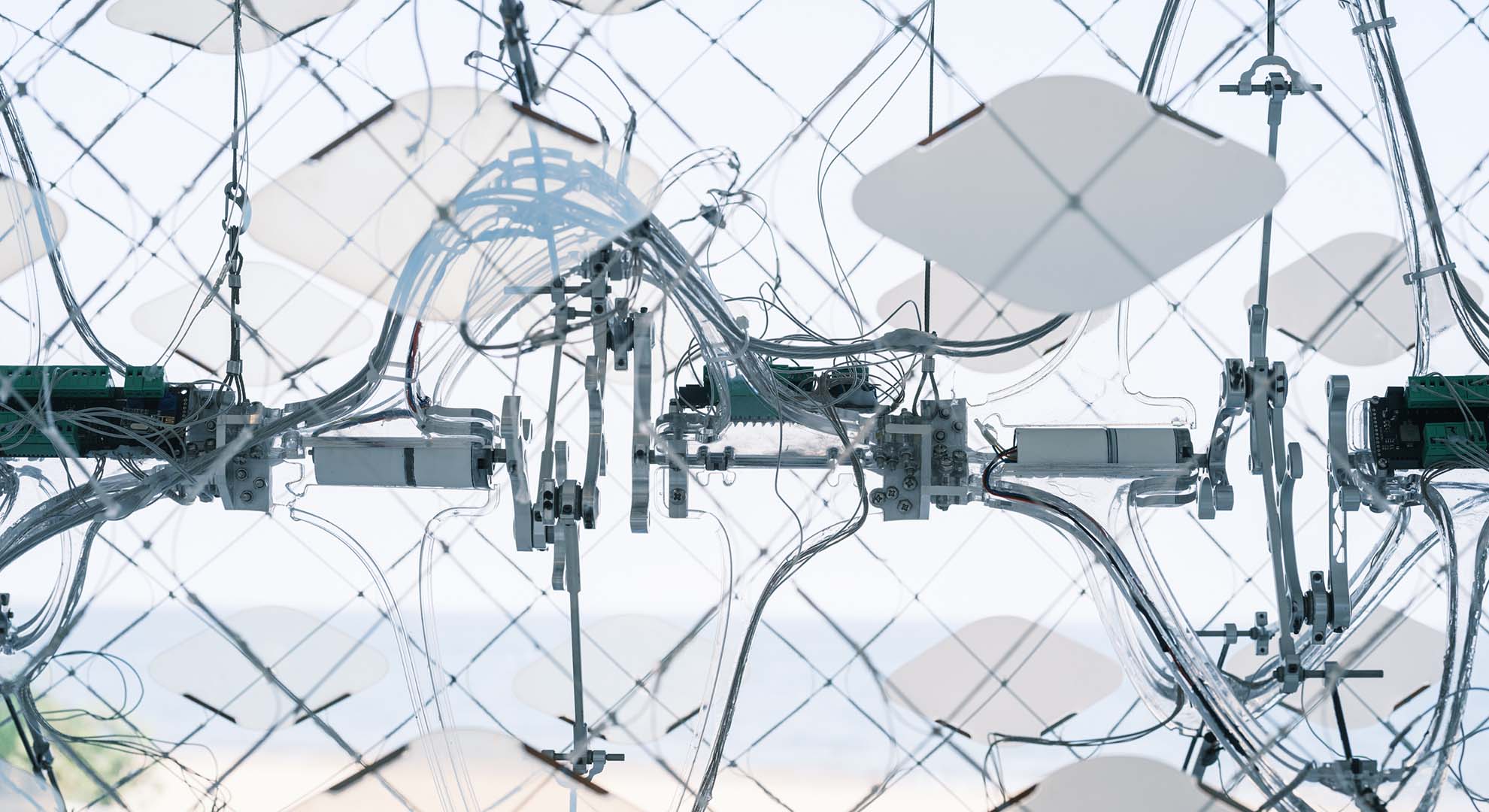Cloud Atlas
An interactive apparatus for air quality awareness
In this new era of the Anthropocene, we are recognizing more than ever that human actions reshape the atmosphere with pollution and emissions, and architects must adapt to coexist with nonhuman inhabitants like particles and dust. Already in the 1960s, architects like Haus-Rucker-Co and Reyner Banham started to address environmental concerns by inviting air into their architectural discussions.
In our previous project Sentient Clouds, we investigated ecological and social issues that happened at different altitudes of the atmosphere. Considering architecture as a medium between human perception and the atmosphere, we developed four speculative scenarios where sensing components could serve as infrastructures to respond to environmental crises.
Later on we were invited to participate in the World Weather Network, which is a constellation of weather stations set up by 28 art agencies around the world. In addition, we were commissioned by the UCCA Center for Contemporary Art in Beijng to create a weather station installation in Beidaihe, Hebei, for which we designed Cloud Atlas, a cloud-like device that changes its shape, transparency and sound according to the collected Air Quality Index (AQI) data.

Front view, “Cloud Atlas” installation, Xiaoxiao Zhao, 2022, UCCA, Beijing. Photo © Zaiye Studio
Our team developed a Python script to collect seven sets of real-time AQI data every minute from seven monitoring stations near the site. The datasets were divided into five levels to show the current level of components in the Arduino program. The rotational speed of the motor was determined by the level of the AQI data of its group, driving the shape of the installation to “breathe” at specific rates according to real-time air conditions.
Cloud Atlas consists of two layers: An outside lightweight carbon fiber mesh facade with Switchable Transparent Films (STF) and an interior structure made of acrylic brackets and aluminum mechanical systems. Seven mechanical units with custom-printed circuit boards (PCB) have been designed to deform the outer resilient mesh structure according to the seven sets of AQI data. The units have been assembled with transparent PC brackets.
A crankshaft mechanism driven by a direct current (DC) motor has been used for each unit to move three rods that pull and push the outside mesh to a deformed state. For instance, when the AQI index is 154, which means the pollution level is unhealthy, the motor rotates at its highest speed, driving the three rods to pull and push faster, thereby quickly deforming the mesh. Meanwhile, the STF sheets turn foggy, indicating an unhealthy air quality.

Detail, “Cloud Atlas” installation, Xiaoxiao Zhao, 2022, UCCA, Beijing. Photo © Zaiye Studio
The seven groups of STF sheets have been laser-cut and installed on the facade to indicate the AQI by gradation of transparency. As mentioned, when the AQI exceeds the unhealthy level on a smoggy day, the STF sheets turn foggy. Conversely, transparent STF sheets indicate a clear sky. The routings of the STF sheets circuits are organized according to the geometrical form of the outside mesh.
The overall programming of the installation can be divided into two parts: One is the AQI program, and the other is the human interaction program. In summary, the installation's linear actuators respond to the participants, altering the cloud's shape and creating a microcosm of a weather system. This dynamic interaction implies the butterfly effect, where human actions influence natural atmospheric ecosystems, highlighting the significance of our impact on the environment.
Additionally, an acoustic system composed of mini speakers and Bluetooth modules has been installed on the interior structure. The constantly changing shape, color, and sound of the installation creates different interactive experiences for the participants from both sensory as well as aesthetic perspectives as they access the monitoring data.

Front view, “Cloud Atlas” installation, Xiaoxiao Zhao, 2022, UCCA, Beijing. Photo © Zaiye Studio
Even in its prototype stage, the device showcases the vast potential for various expanding application scenarios. Multiple devices can create an urban network of environmental monitoring stations equipped with a morphable and mobile skin, which would effectively distinguish safe zones from polluted areas within cities. The changes in shape and transparency would act as a preventive measure by serving as a visual warning to keep people away from those areas.
The design of the Cloud Atlas installation contributes to exploring the possibility of an interactive and responsive architecture by proposing a sentient system that interchanges environmental data and human behaviors. The project provides a framework for kinetic installations that interpret weather monitoring data through motion.
Main image: ”Cloud Atlas” installation overview, Xiaoxiao Zhao, 2022 UCCA, Beijing. Photo © Zaiye Studio
Video: Cloud Atlas installation, Xiaoxiao Zhao, 2022
Creative Team: Zilun Nie, Yao Meng, Chun Song, Fengqi Li, Xiaolei Hu
Technical Support: Shenzhen Chiyu Technology
